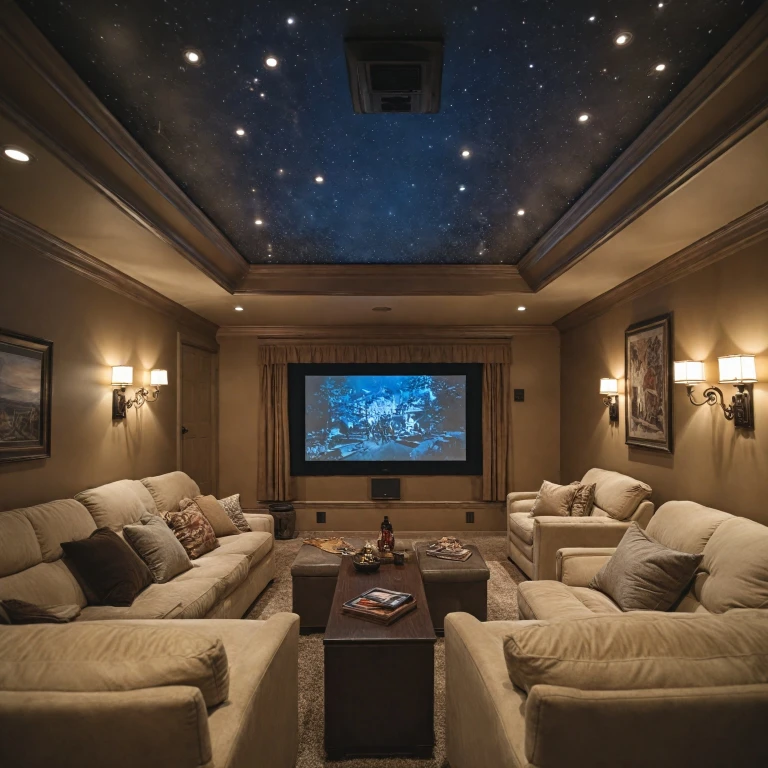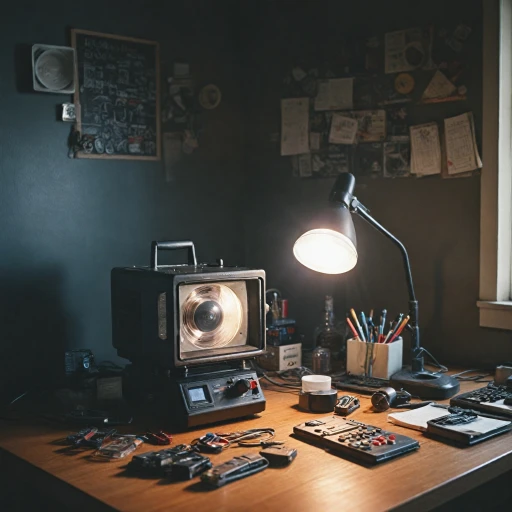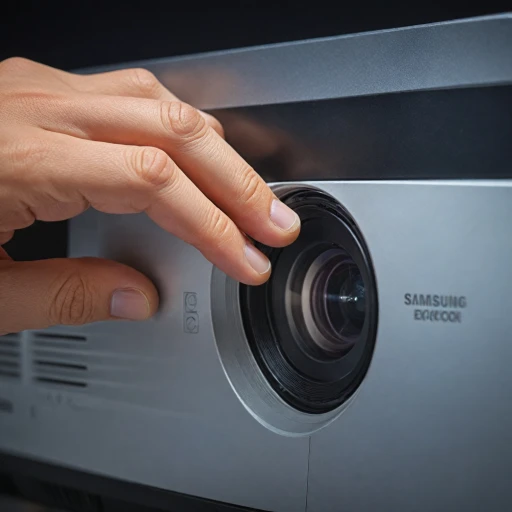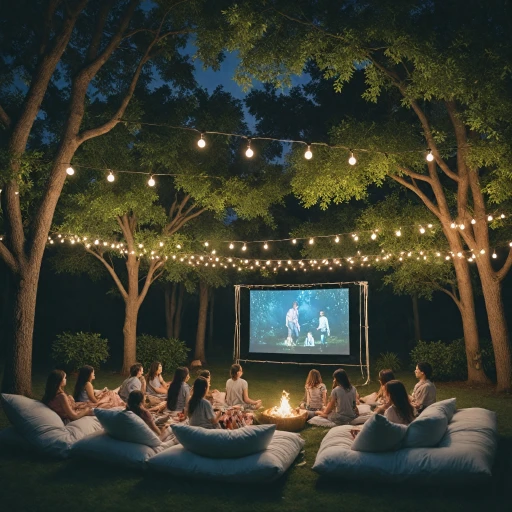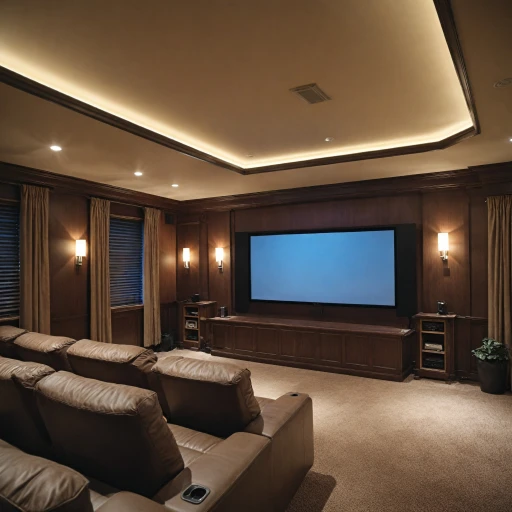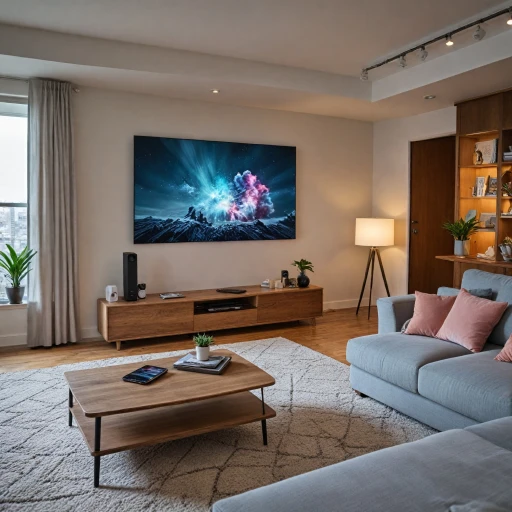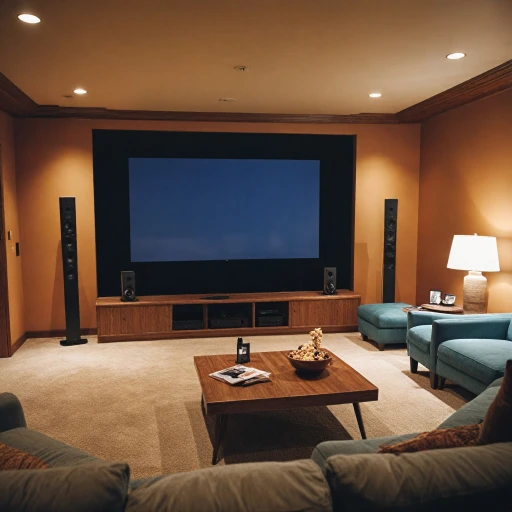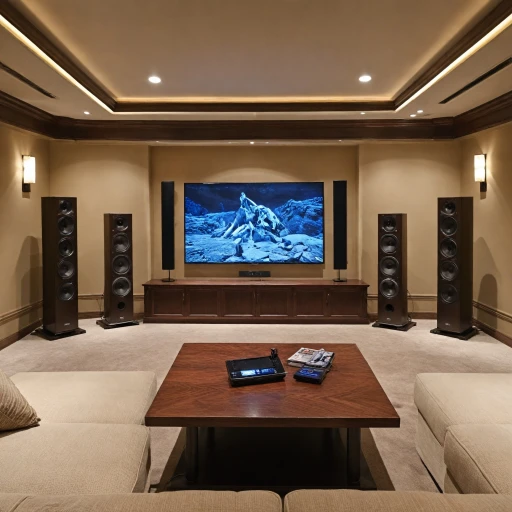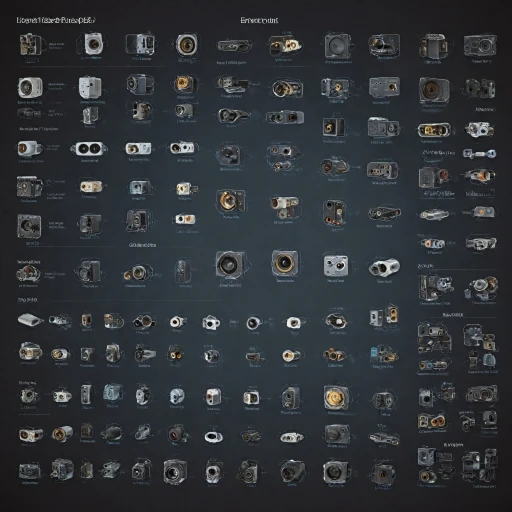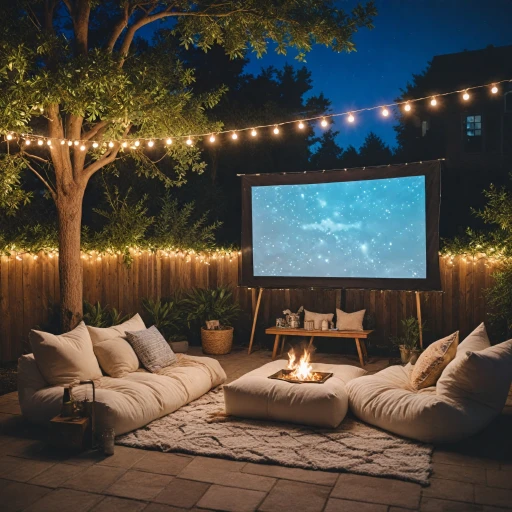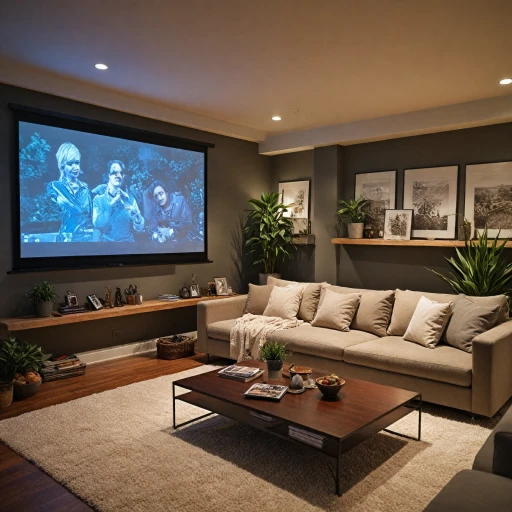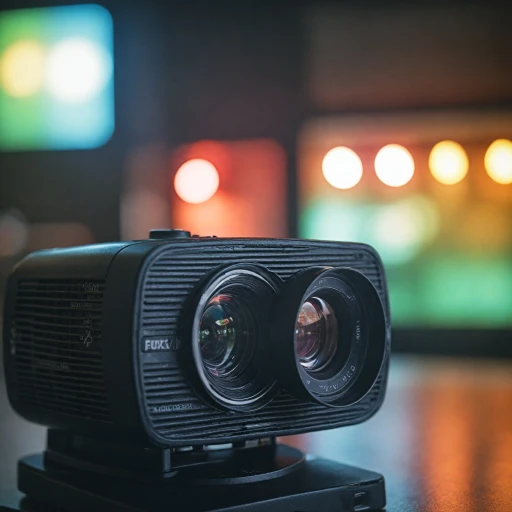
Understanding the Basics of Home Theater Projectors
Delving into the Core Components of Home Theater Projectors
When considering transforming a simple space into a home cinema, the projector becomes the focal point of your design. Understanding the various types of theater projectors is crucial for an optimal movie viewing experience. Before diving into the selection process, it's beneficial to recognize the broad spectrum of features available. From traditional lamp-based projectors to cutting-edge laser projectors, the technology behind these devices dictates their black and white contrast capabilities—an essential aspect for vivid image quality. When evaluating projectors, brands like Epson stand out, particularly models such as the Epson EpiqVision and Pro UHD series. These projectors are lauded for their ease of use, offering versatile solutions whether you're setting up a permanent display in a dedicated room or opting for a portable projector for varied environments. Some key considerations for enhancing your home theater experience include:- Projection technology: This affects brightness (measured in lumens) and how well the projector performs in ambient light.
- Throw distance: Short throw projectors are perfect for small spaces, allowing a large image at a short distance.
- Resolution and image quality: The resolution defines clarity, with higher resolutions like 4K delivering crisp, detailed visuals.
- Price range: Projectors vary extensively in cost, so it's important to balance your budget with desired features.
Choosing the Right Screen for Your Projector
Picking the Ideal Projector Screen: Key Factors to Consider
When seeking the right screen for your theater projector, several factors need careful consideration to ensure you get the best image quality and overall viewing experience in your home cinema. Here's a breakdown of what to keep in mind:
- Screen Material: The material of the projection screen impacts the image quality significantly. Options like matte white, gray, or specialized materials are available to accommodate different lighting conditions. If you’re dealing with ambient light, a gray or black screen might enhance contrast and image clarity.
- Screen Type: Select between fixed frame, pull-down, and portable projector screens based on your space and mobility needs. A fixed frame screen delivers a professional setup with excellent tension, while a manual or electric pull screen adds convenience and flexibility.
- Viewing Angle: To accommodate multiple viewers, consider the viewing angle of the screen. This feature ensures the image remains crisp and clear from various seating positions in your room.
- Screen Size: Match the screen size with your projector's capabilities and room dimensions. A standard rule is that the screen should be about 1.5 times the diagonal size of your seating distance.
- Price: Finally, budget considerations can't be ignored. While screens like the ones from Elite Screens offer premium features, there are affordable options suitable for home use that won't compromise on quality. Research reviews and user feedback for the best choice.
Investing in the right screen will enhance your home theater experience, providing a true cinema pro feel. For more tips on creating the ultimate movie night ambiance, explore how to create a pop-up movie theater experience indoors or outdoors.
Setting Up Your Home Theater Space
Creating the Ideal Space for Your Home Cinema Experience
Designing the perfect home cinema requires more than just choosing high-quality projectors like the Epson EpiqVision or a reliable screen material; consideration of your space plays an essential role in maximizing image and sound quality. Firstly, assess the room size and shape to determine how the projector and screen will fit. If you have a smaller space, a short throw projector could be a smart choice, allowing you to project a large movie screen without requiring a long distance. In contrast, a larger room might benefit from a pro UHD or laser projector to deliver a more immersive cinema pro experience.Optimizing Lighting and Color Schemes
Lighting conditions also impact projection quality. Ideally, your room should have controlled ambient light to prevent it from washing out the picture. Consider using blackout curtains to manage light exposure effectively. Additionally, your room's color scheme matters; darker walls help reduce reflection, enhancing the overall viewing experience.Choosing the Right Projection Setup
The choice between fixed frame projector screens and portable models like pull screens influences the room's setup. Fixed frames, such as those offered by elite screens, provide sturdier image quality, making them a suitable option for a dedicated home theater. Alternatively, portable screens offer versatility if you need to rearrange your space or use your projector elsewhere. Whether you opt for a standard fixed frame or a portable projector setup can depend on your budget and room dynamics. Prices vary significantly between models, so it's essential to weigh the benefit of image quality against cost efficiency.Arranging Your Seating for Maximum Viewing Experience
Finally, proper seating arrangement is crucial to enjoying your home theater. Ensure the seating helps maximize the viewing angle and can comfortably accommodate all your viewers. The optimal distance between the screen and seating area often correlates with screen size— a general rule is to sit 1.5 to 2.5 times the screen's width away but adjust this based on personal preference and room size. Creating an inviting and functional home theater is achievable with thoughtful planning and attention to detail. When integrating your projector and screen into your space, consider both technical specifications and room dynamics to enhance your movie viewing sessions to their full potential. For more detailed guidance on projector maintenance and image enhancements, explore some effective tips for cleaning your projector lens.Calibrating Your Projector for the Best Picture Quality
Achieving Optimal Image Quality
The allure of a home theater projector is its ability to transform any room into a cinematic experience, and image quality plays a crucial role in this transformation. Start by positioning the projector correctly to ensure the best image projection. Consider the projector type you have—for instance, short throw projectors allow placement closer to the screen. Brands like Epson offer features such as laser projection and advanced color settings to enhance image clarity and brightness.
Selecting the Right Settings
Next, focus on calibrating the projector settings. Adjust brightness, contrast, and color balance to suit your viewing environment. If you're using an Epson EpiqVision or similar models, explore built-in calibration tools. Ambient light can wash out images, so darkening your room with heavy curtains or placing screens strategically can help. A fixed frame screen is ideal for dedicated home theaters, while a pull-down screen is more versatile in multi-use spaces.
Fine-Tuning for Perfection
While most projectors come with preset modes, manual adjustments can often yield better results. Turn off any dynamic contrast settings that might overly adjust the image during bright scenes. Testing with different types of content—from vivid animation to classic black-and-white films—will guide necessary fine-tuning to enhance image consistency.
Ensuring Correct Resolution and Aspect Ratio
Ensuring the resolution and aspect ratio are correctly set to match your screen is vital for achieving best picture quality. Most modern projectors support HD and 4K resolutions, which work well for a 120-inch screen. Check the projector’s manual for guidance specific to your model.
Calibrating your projector might seem technical, but with attention to detail and a bit of patience, your home cinema will rival theater quality. Regular checks and adjustments will keep the setup optimal, ensuring every movie night creates the unforgettable experience your home theater promises.
Integrating Sound Systems with Your Home Theater Projector
Enhancing Audio Experience with Seamless Integration
One of the most critical components of a home theater setup is the sound system. When combined effectively with your home theater projector, it enhances your movie-watching experience, providing immersive sound that matches the high-quality visual output of your projector and screen.
First, consider the layout of your home theater space. The size and shape of your room will influence the type of audio setup you choose. Whether you're using a fixed frame projector screen or a portable projector, the arrangement of your sound system should complement your viewing angle and image quality.
Sound Systems Options to Complement Your Viewing Experience
- Surround Sound Systems: These systems provide an immersive audio experience by placing speakers at strategic locations around your room. They are ideal for larger rooms with a projection screen like those from Elite Screens.
- Soundbars: If space is limited or you're looking for a simpler setup, soundbars are a great option. They can be positioned below your theater projector or mounted on the wall to deliver quality sound without the clutter of multiple components.
- Component Systems: These offer the flexibility to customize each piece, from the amplifier to the speakers, for the best possible home cinema experience.
Calibration for Harmony
Once your audio components are in place, calibrating them with your laser projector and projector screens is vital. Adjust the sound levels to ensure they align with your image projection, offering an even and balanced experience.
Some projectors, such as the Epson EpiqVision series, come with built-in features that enhance synchronization between the audio and visual elements. Utilizing these features can significantly improve your home movie nights.
Managing Ambient Light and Acoustics
Finally, consider ambient light and the acoustics within your room. Curtains or blinds can help manage light, while acoustic panels can enhance the sound quality of your home theater. This attention to detail will transform your space into a private cinema pro setting, ensuring every movie is a spectacle.
Troubleshooting Common Issues with Projectors and Screens
Solving Common Projection Problems
Even with the perfect setup, challenges may arise with your home theater projector and screen. Here's how to identify and tackle some frequent issues:- Image Quality Concerns: If your movie projection isn't as sharp as you expected, consider the type of screen material you're using. A screen that's too reflective or not reflective enough can dramatically affect image quality. Ensuring you're projecting on a white or light-colored projection screen can help, especially in rooms with ambient light.
- Misalignment: The image may not align correctly with the screen. Adjust the projector's position and your screen's settings. Some systems, like Epson's EpiqVision and other high-end projectors, offer digital keystone correction to fix this.
- Blurry Image: A common culprit for a fuzzy picture can be incorrect focusing. Make sure to adjust the focus until you achieve a crisp projection. Portable projectors often require frequent focus adjustments.
- Discoloration or Color Shifts: If the colors look off, your projector likely needs calibration. This can often be resolved by adjusting the color settings in the projector menu. Projectors like the Epson Pro UHD offer advanced calibration features to fine-tune your viewing experience.
- Screen Stains or Imperfections: Check your projector screen for any visible stains or imperfections. A clean, mark-free screen is crucial for maintaining the best picture quality. Consider elite screens or fixed frames for more professional options.
- Sound Sync Issues: Integrating sound systems with your projector can offer incredible audio quality, but ensure the audio is synchronized with the image to prevent distracting lags. Adjust audio settings in your home theater system or consult your sound system’s manual for guidance.
- Poor Black Levels: If the black tones appear washed out, consider using a projection screen designed to enhance contrast. Some screens are specifically crafted to improve black levels in light-controlled rooms.
